Yahan Liu (Vera) Industrial Designer/Landscape Designer

Education Contact
2019 to 2022 Landscape Architecture
Auburn Universi
2022 PHS Philadelphia Flower Show (Auburn Univerisy Landscape Program)
-Gold Medal
Auburn Universi
y y y
Auburn, Auburn, Auburn,
MLA BID- Bachelor in Industrial Design Study Abroad
601 N. Gay St, F-204 Auburn, AL 36830 liuyahan1994@gmail.com 407-961-9114
-The Philadelphia Trophy
-The Bulkley Medal of the Garden Club of America
-Special Achievement Award of the Garden Club Federation of Pennsylvania
-Herb Society of America Green Ribbon 2016 to 2018 Industrial Design
2017 Summer Industrial Design
Auburn Universi
L L L
A A A
First Prize TTI Hammer Drill Workshop
Redesigned hammer drill for RIDGID as a group. Existing hammer drill on the market are too heavy, we tried to make it ligher.
Designed the logo for Auburn University CSSA and the logo for 2016 Chinese New Year Gala.
Bank Shrub Planting Bank Tree Planting Retention Pond Water Line Foot Bridge 115.5% 115.5% 15.7% 15.7% 77.8% 77.8% 27.8% 27.8% 0.6% 0.6% 28.3% 28.3% 91.2% 91.2% 17.0% 17.0% 78.7% 10.7% 10.7% 59.5% 59.5% 3’ 3’ 15
happens when there is sun. At night, or in winter, the plant is able to store glucose through process called cellular respiration. The stored glucose provides the energy to help many spring bulbs flower. Crocuses, daffodils, hyacinths, tulips and snowdrops all depend on glucose to flower.
Glucose joins with oxygen respiration. Glucose and oxygen together produce energy, which helps the plant thrive. Carbon dioxide is one byproduct of the respiration process. If plant overcrowded or waterlogged from too much rain or poor soil drainage, this can damage or kill pthe plant. So plants, like people, need space take oxygen. Humans and other mammals, however, cannot form glucose in their bodies the way plants can. That’s why people eat plants that contain glucose.
Not all glucose used for respiration. What’s not needed to produce energy for the plant used for many other purposes. It may be stored seeds. Glucose molecules together form cellulose, which builds adds strength cell walls. Glucose molecules also form carbohydrates. When combined with nitrates from the soil, glucose will form amino acids. When amino acids join together, they form proteins. So, think of glucose as an important source of carbohydrates and, the right combination, as part protein. Without glucose, plants won't grow or reproduce.
1. Opelika Community Corridor

Working with the city of Opelika to design an enjoyable, family-friendly downtown.
PHS Flower Show
Auburn University graduate landscape architecture students presented, Mixed Shades, Much Joy, at the Pennsylvania Horticultural Society Philadelphia Flower Show. The resulting

Renaissance writer who was born in Philadelphia (1885) and later moved to Birmingham, Alabama. She created a children’s magazine column, The Little Page, under editor W.E.B. Du Bois. Newsome also wrote children’s poetry, including the book Gladiola Gardens, which celebrated and connected the beauty of Black children and nature.
River Region Trial

Working with The River Trail together to design a green way at the city of Montgomery, AL. To bring more opportunities to the Surrounded community.
Donald E. Davis Arboretum Redesign

Redesign Donald E. Davis Arboretum on Auburn University’s campus to bring more opportunities to the arboretum.

Plants Project
The plants project uses the courtyard space at the Dudley Common on Auburn University’s campus to design a garden.
Research and additional works through the program.
Sun the ultimate energy source of all metabolic energy for the planet. Photosynthesis is essential for maintaining all forms of life on earth. Photosynthesis is the process plants use to capture energy from sunlight and convert into biochemical energy, which subsequently used support nearly all life on earth. Source: https://www.clevelandhs.org/apps/video/watch.jsp?v=63244 https://www.khanacademy.org/science/ap-biology/cellular-energetics/photosynthesis/a/intro-to-photosynthesis https://education.nationalgeographic.org/resource/photosynthesis https://www.britannica.com/science/photosynthesis/Structural-features The Power: Sunlight Thylakoids Stroma Photosynthesis Gamma rays X-Rays UV Lights Infrared Radio Waves Blue Green Red Yellow Mesophyll Choroplast 0.001nm 1nm 10nm 1000nm Visible Light 0.01cm 1cm 1m 100m Photosystem Light (energy) Light ATP NADPH O Light(energy) Chlorophyll molecules eeReaction Center Chlorophyll Glucose 1.Stored Glucose Oxygen Photosystem ATP Synthase Stroma (Calvin Cycle) (Light-dependent reactions) Thylakoid Space Structure within the cells plants and green algae that the site of photosynthesis, the process by which light energy converted to chemical energy, resulting the production of oxygen and energy-rich organic compounds. Leaf Section A leaf is a factory P680 P700 H 1/2 2H+ H+ NADP+ NADPH H+ H+ H+ H+ ADP ATP H+ H+ 2. Glucose and Respiration 3. Other Roles for Glucose v 01 0203 05 06 04 River Region Trail Opelika Community Corridor Arboretum Redesign Research and Additional Work Plants Studies PHS Flower Show
5.
4.
2.
6.
3.
Research and Additional Work
Opelika Community Corridor
Opelika community corridor is a one-semester studio project that collaborates with the city of Opelika to develop a more family and visitors-friendly downtown in Opelika, Alabama. Throughout the semester, by utilizing 3D modeling, our studio was trying to accomplish various downtown plans for the city of Opelika.
My design is located in downtown Opelika, starts from the old Depot office on the Southwest side of downtown and ends at Stern Park on the Northeast side of downtown. During our studio’s design community service at downtown Opelika, our cohort received much helpful information from the Opelika communities. In addition, we gained a different perspective on the Opelika site from server maps and notes:
1.South Railroad Avenue attracts more people than north Railroad Avenue.
2.The Opelika community thinks many areas at downtown Opelika could be improved to bring better experience outcomes downtown.
3.There are diverse opinions on the parking situation in downtown Opelika. At the same time, the city of Opelika has the most treasurable history. So my design focused on bringing the history tie together downtown and simultaneously creating a pleasant outdoor experience for everyone who comes to downtown Opelika.
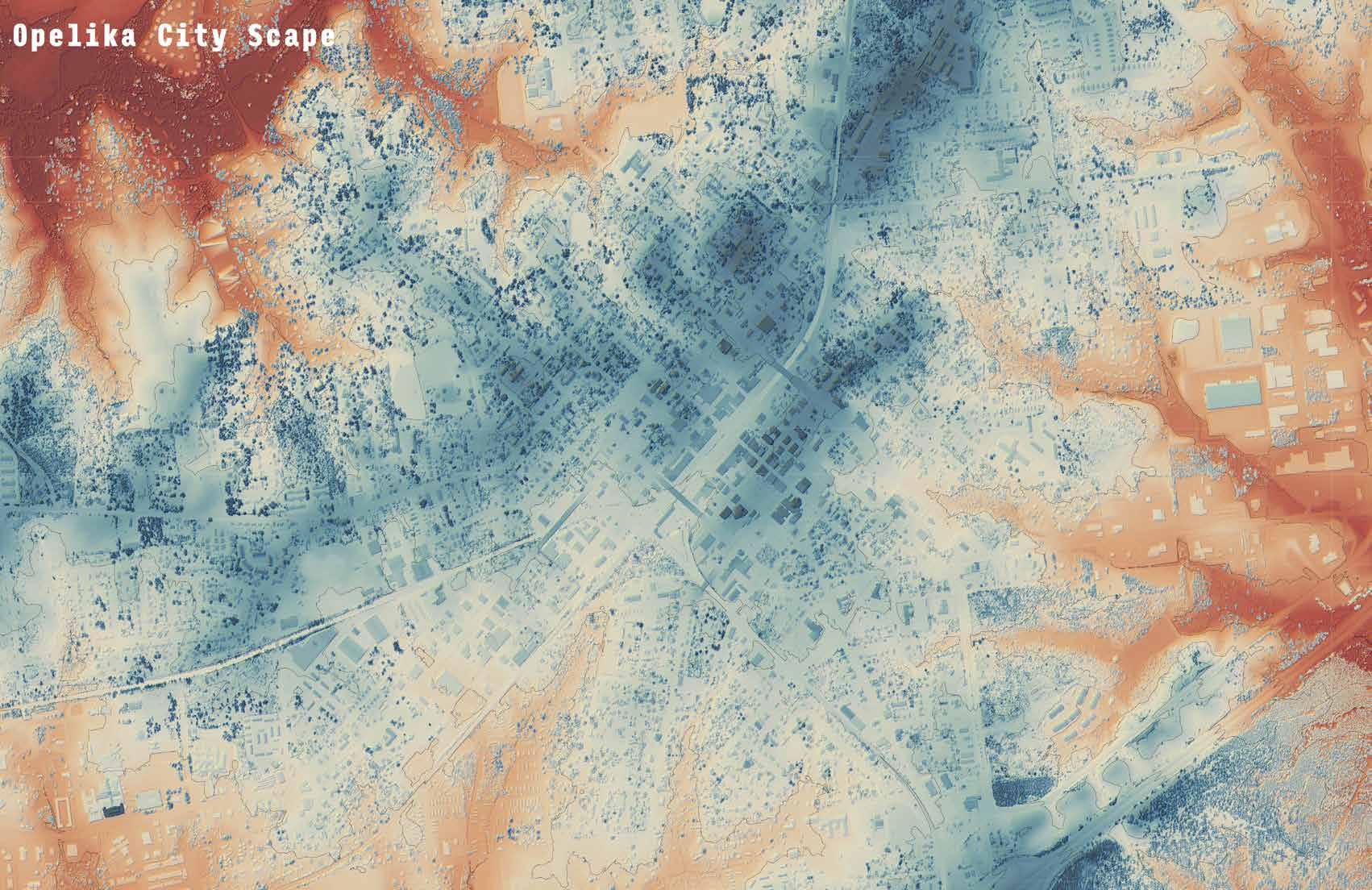
Opelika Downtown


Opelika attracts many people at night and during the weekends. However, on a weekday, Opelika is pretty empty. At the same time, most of the interactions are gathered at South Railroad Avenue, making this side of the street busier than across the railroad.


10th Street The Depot/ Currently a Pre-K Rail Line
Niffer’s Place N. Railroad Ave S.RailroadAve Irish Bred Pub SideTrack 9th Street 8th Street 7th Street 5th Street 6th Street Stern Park Art Haus
Framework Plan
N. Railroad Avenue 9th St.
10th St. S. Railroad Avenue
Focus Area One
Bike & Pedestrian Sidewalk with String Lights along with the whole site.
This focus area is between the old Depot office and 9th street. This design relocated the Museum of East Alabama to the warehouse. It turned the green space across the train track into an outdoor train history landscape display to view from the museum’s back window. Add an amphitheater next to the pre-K for outdoor class and their graduation. At the same time, add a playground in the area for children to play. Also, adding in shrub screening for safety and noise purposes.

Between 10th and 9th street, I am adding a shrub screen along the train track, outdoor seating, and an outdoor deck for hangout.


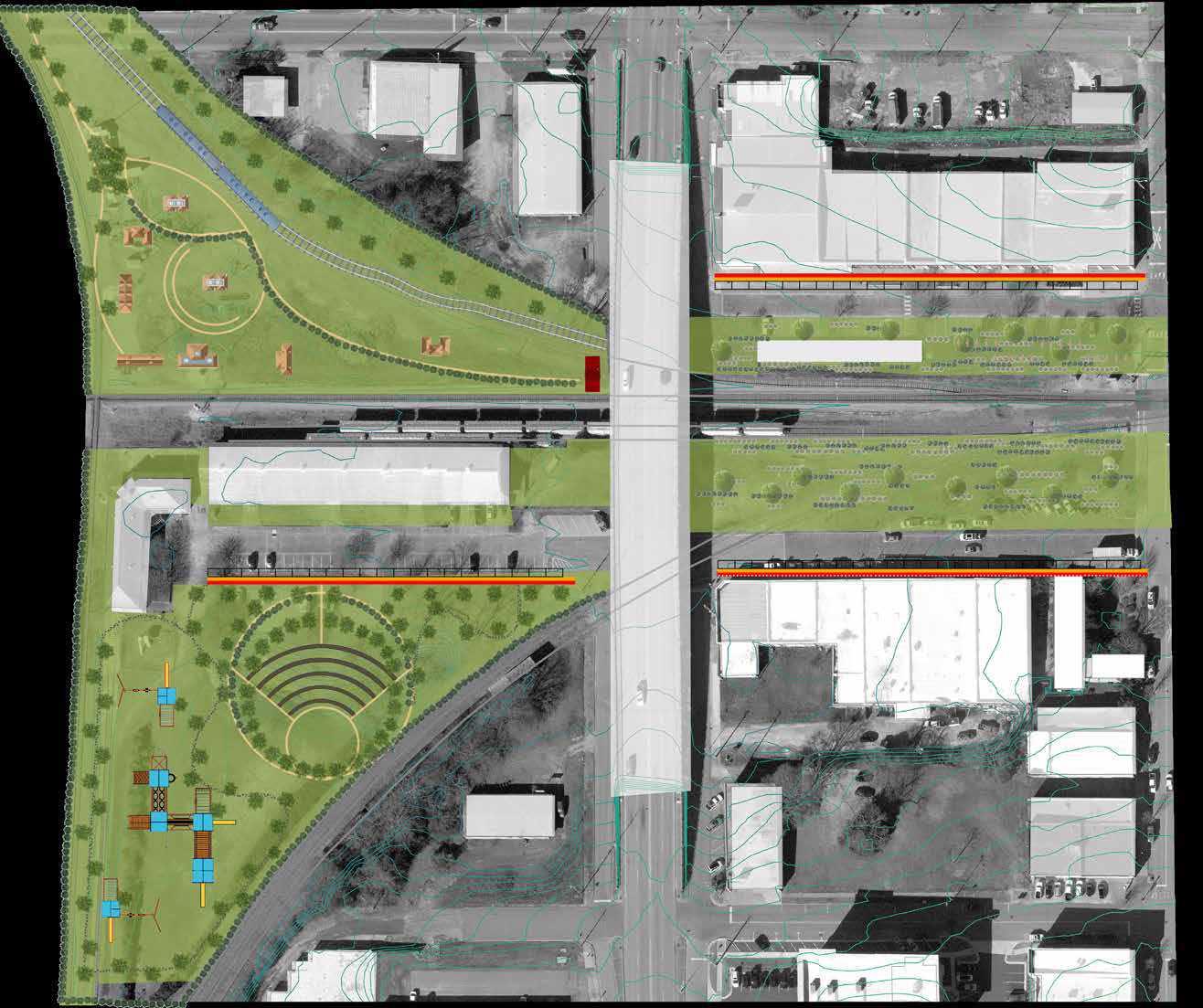
On South Railroad Ave, between 9th and 8th street, adding an outdoor pool with a plantation creates a pleasant outdoor experience. Also, at the beginning of 9th street, add a pavilion for any small outdoor activities. Finally, turn the area into a green art space between 8th and 7th street. Have local arists and residents come to paint the concrete wall. It can be used for outdoor activities, such as outdoor yoga, concert, etc.
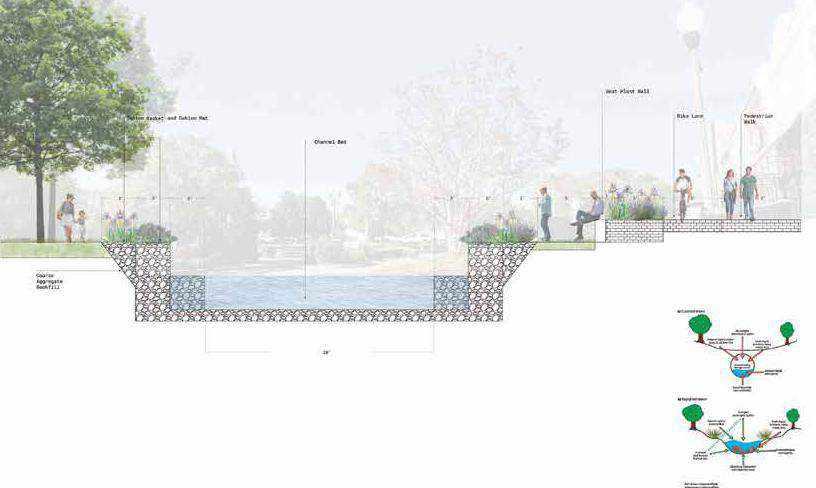
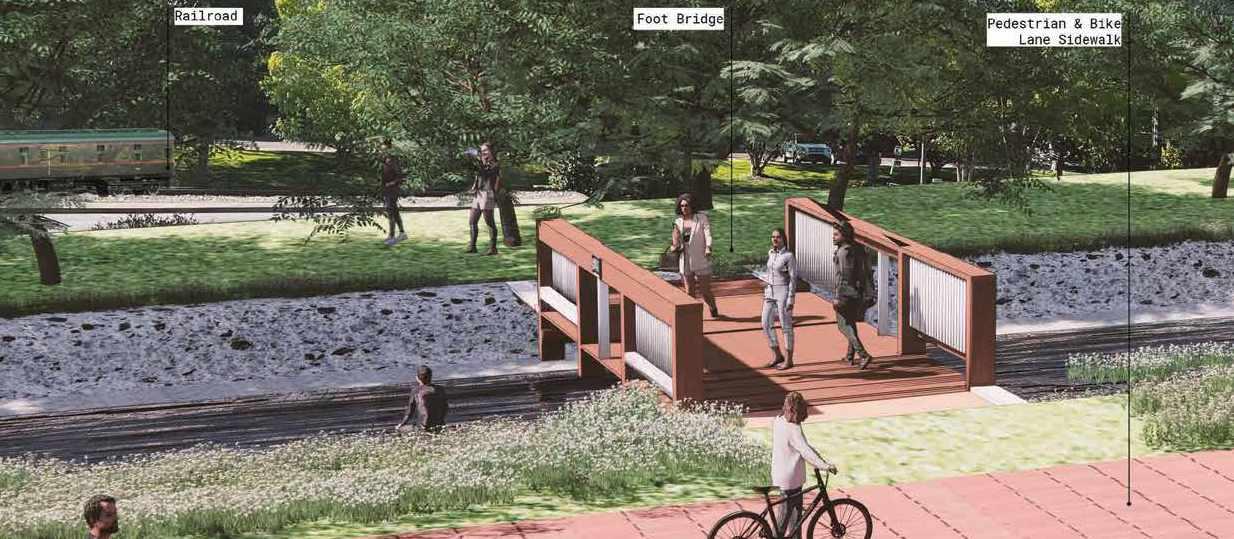
Add more outdoor seatings on North Railroad Ave between 9th and 7th street. At the same time, relocate the historical Frog to the beginning of 8th street for more viewing.


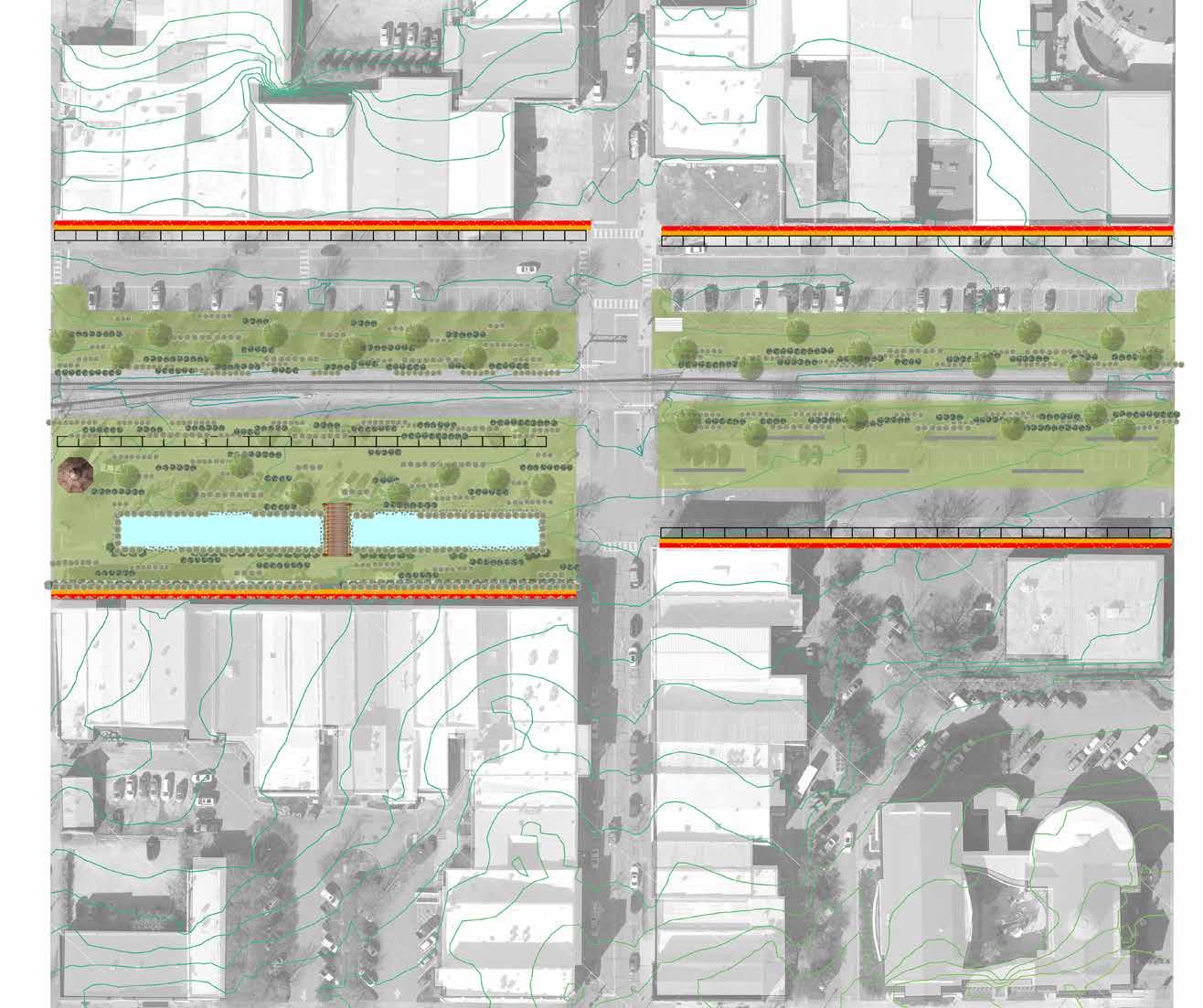 Focus Area Two
Bike & Pedestrian Sidewalk with String Lights along with the whole site.
Focus Area Two
Bike & Pedestrian Sidewalk with String Lights along with the whole site.
S. Railroad Avenue N. Railroad Avenue 8th St. 7th St. 9th St.
7th St. 6th St. 5th St.
Railroad Avenue N. Railroad Avenue

Focus Area Three


Bike & Pedestrian Sidewalk with String Lights along with the whole site.
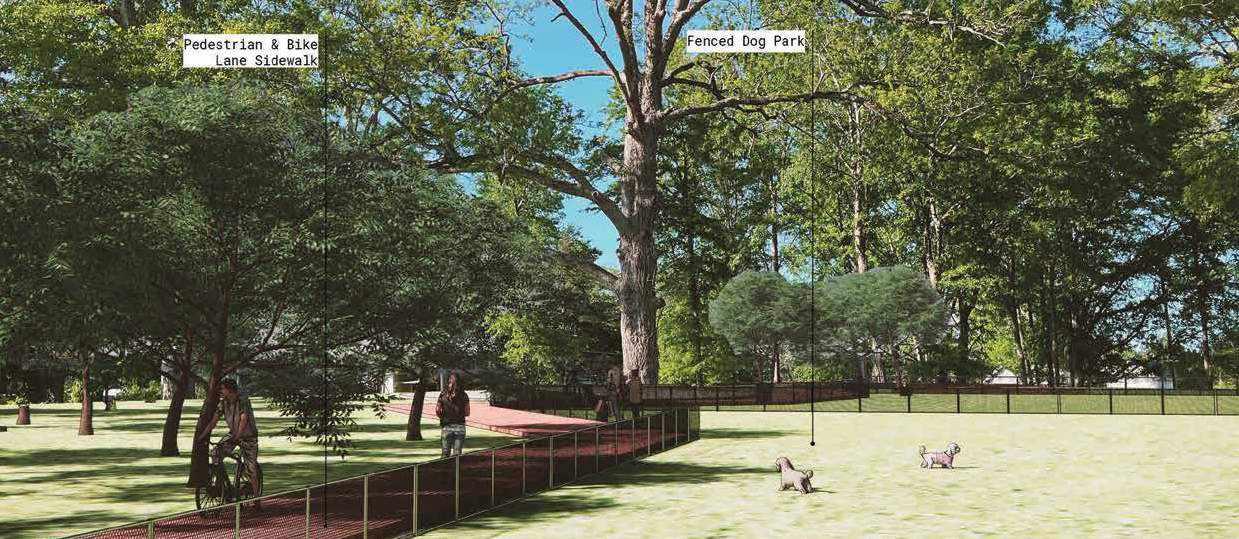
Between 7th and 5th street, the side track areas turned to the art & sculpture corridor. At the same time, invite local artists or residents to paint bike & pedestrian sidewalks while entering the art district that the Art Haus is potentially making in the area. And adding more parking along the street. S.
100 Years Planting Plan


Installation
American beech is planted during the installation year to create shade for later plant species. On N Railroad Avenue, the American beech is lined up as a straight roll close to the street. The American beech is planted more freely in the active pedestrian area to create a different under-canopy experience for visitors. At the same time, have Florida jasmine and gardenia planted next to the railroad as a fence. Furthermore, it keeps the shrub switching pattern across the site.
Scale:
1”=50’0”
American Beech Florida Jasmine Gardenia
Florida Jasmine American Beech Gardenia
American



20 Years’ Growth
American Beech Bigleaf Magnolia Scarlet Oak
Scale: 1”=50’0”
Florida Jasmine Gardenia
beech is planted during the installation year American beech keeps growing during 20 years of growth to create incredible shades. Bigleaf magnolia and scarlet oak are getting larger to create a dense forest. At the same time, have Florida jasmine and gardenia planted to grow more extensive, the edge of each shrub slowly fading away.
Bigleaf Magnolia Florida Jasmine American Beech Scarlet Oak Gardenia
Florida Jasmine Gardenia
American Beech White Oak


By year 100, the bigleaf magnolia and scarlet oak will die out. However, at the same time, the pignut hickory and white oak are taking over the space to create a new forest.

100 Years’ Growth
American Beech White Oak Pignut Hickory
Scale: 1”=50’0”
Florida Jasmine Gardenia
Pignut Hickory
Mixed Shades, Much Joy
Pennsylvania Horticultural Society(PHS) Philadelphia Flower Show
Auburn University graduate landscape architecture students presented, Mixed Shades, Much Joy, at the Pennsylvania Horticultural Society Philadelphia Flower Show. The resulting exhibit focused on the work of Effie Lee Newsome, a Harlem Renaissance writer who was born in Philadelphia (1885) and later moved to Birmingham, Alabama. She created a children’s magazine column, The Little Page, under editor W.E.B. Du Bois. Newsome also wrote children’s poetry, including the book Gladiola Gardens, which celebrated and connected the beauty of Black children and nature.
 Photot by: Yahan Liu
Participant: Taylor Chavers Lily Dendy Dustin Elston Sadie Gurkin Emily Gustafson Rob Johnson Yahan Liu
Trae Watson Alexander Wayland
Photot by: Yahan Liu
Participant: Taylor Chavers Lily Dendy Dustin Elston Sadie Gurkin Emily Gustafson Rob Johnson Yahan Liu
Trae Watson Alexander Wayland
THYMUS PSEUDOLANUGINOSUS 238


PEROVSKIA ‘BLUE JEAN BABY’ 21
RUDBECKIA FULGIDA ‘AMERICAN GOLD RUSH’ 140


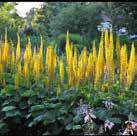
COREPSIS ‘GOLDEN SPHERE’ 80 LIATRIS SPICATA 12
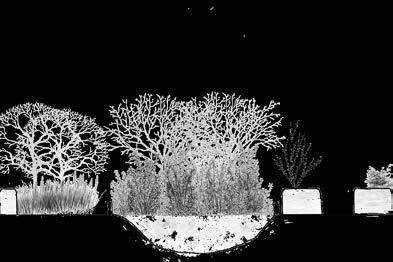

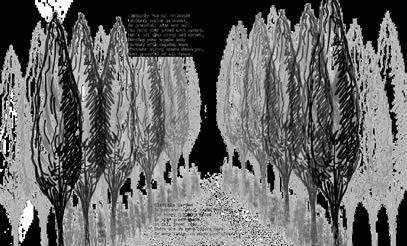


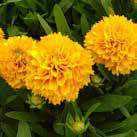


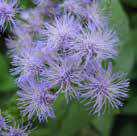

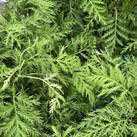
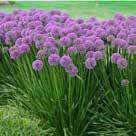

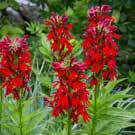

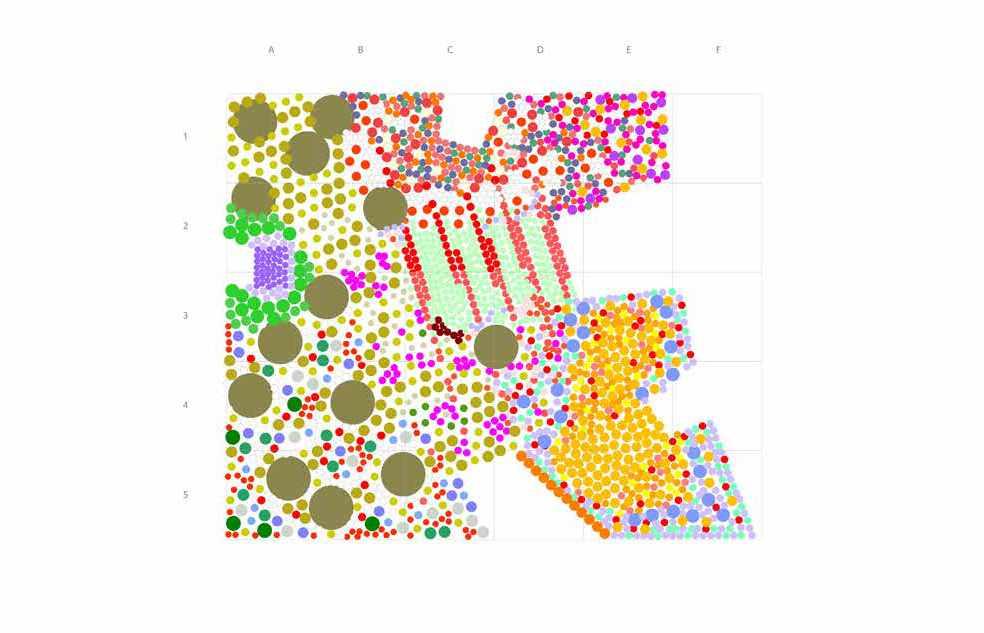

EUPATORIUM COELESTINUM

STACHYS BYZANTINA ‘HELEN VON STIEN’ 61






MISCANTHUS SINENSIS ‘MORNING LIGHT’

GAURA LINDHEIMERI 284
LOBELIA CARDINAILS 26
MONARDA ‘BALMY ROSE’ 49
NEPETA GOVANIANA, CATMINT ‘WALKERS LOW’ 38
LILIUM ‘STAR GAZER’ 37 AGASTACHE BLUE FORTUNE 31 LIGULARIA THE ROCKET 18
LONICERA SEMPERVIRENS SULPHUREA ‘JOHN CLAYTON’ 13 ALLIUM ‘MILLENIUM’ 57
36
148
N. ‘BLUE CLOUD’ 51 RUDBECKIA MAXIA 90 CHASMANTHIUM LATIFOLIUM 95 SESLARIA AUTUMNALIS 14 VERONICASTRUMVIRGINICUM 14 VACCINIUM COR. ‘PATRIOT’ 12 CLETHRA ALNIFOLIA 13 CEPHALANTHUS OCCIDENTALIS 18 COLOCASIA ESCULENTA 88 ACONITUM C. ‘ARENDSII’ 88 VERBASCUM x ‘PLUM SMOKEY’ FLATS ZINNIA ELEGANS 35 TAGETES PATULA 25 CANNA MUSIFOLIA 22 ANEMONE CORONARIA ‘ROSEA’ 12 ALCEA ROSEA 13 CARPINUS BETULUS ‘FASTIGIATA’ WHITE GUARA WOOLEY THYME RUSSIAN SAGE BLACK EYED SUSAN NORTHERN BLAZING STAR CARDINAL FLOWER BEE BALM CATMINT BLUE MISTFLOWER STARGAZER ORIENTAL LILY GIANT HYSSOP LAMBS EAR ZEBRA GRASS JOHN CLAYTON HONEYSUCKLE ORNAMNETAL ONION CORAL BELLS FALSE INDIGO MOUNTAIN MINT ROCKET LIGUARUA LEOPARD PLANT MOUNTAIN MINT BLUE CLOUD CATMINT BLACK EYED SUSAN NOTHERN SEA OATS AUTUMN MOOR GRASS CULVERS ROOT BLUEBERRY SWEETSPIRE BUTTON BUSH ELEPHANT EAR MONKS HOOD MULLEIN ZINNIA MARIGOLD CANNA ANEMONE GIANTS HOLLYHOCK FASTIGATE HORNBEAM GAURA LINDHEIMERI LOBELIA CARDINAILS LIGULARIA THE ROCKET COREOPSIS SOLANNA™ GLOW MISCANTHUS SINENSIS ARTEMISIA G. SUNFERN™ ARCADIA EUPATORIUM COELESTINUM AGASTACHE BLUE FORTUNE RUDBECKIA FULGIDA LIATRIS SPICATA
ARTEMISIA G. SUNFERN™ ARCADIA 17 HEUCHERA ‘BERRY TIMELESS’ 66 BAPTISIA X ‘PLUM ROSY’ 52 COREOPSIS SOLANNA™ GLOW 159 PYCNANTHEMUM MUTICUM 38
ANEMONE SYLVESTRIS
CALAMINTHA
Planting Plan Scheme Drawing Scheme Drawing Scheme Drawing Scheme Drawing Plant List Scheme Drawing
By Lily Dendy By Sadie Gurkin
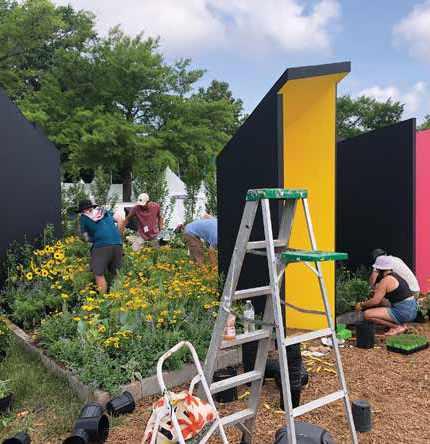
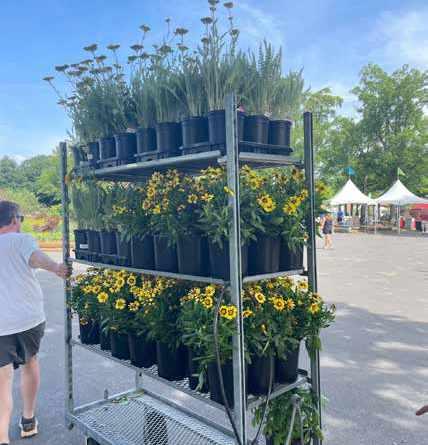

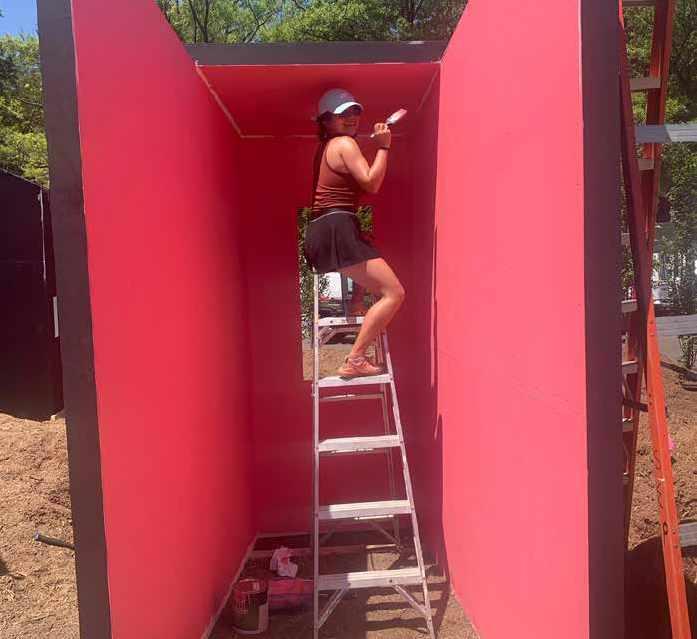
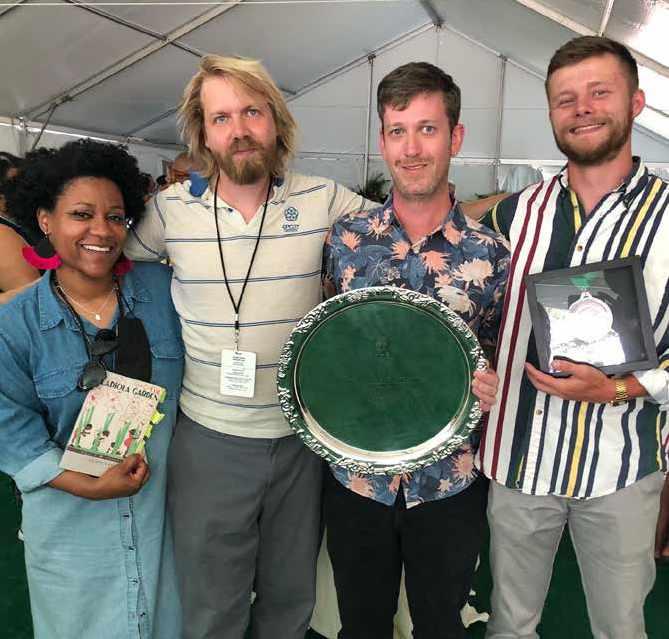



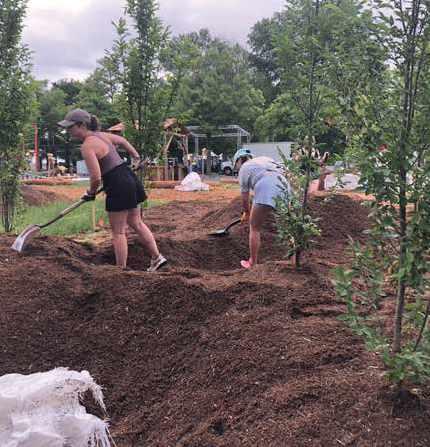
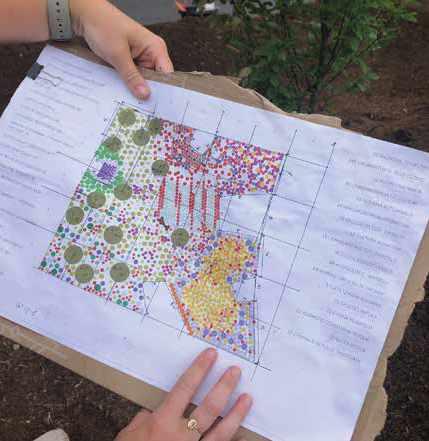
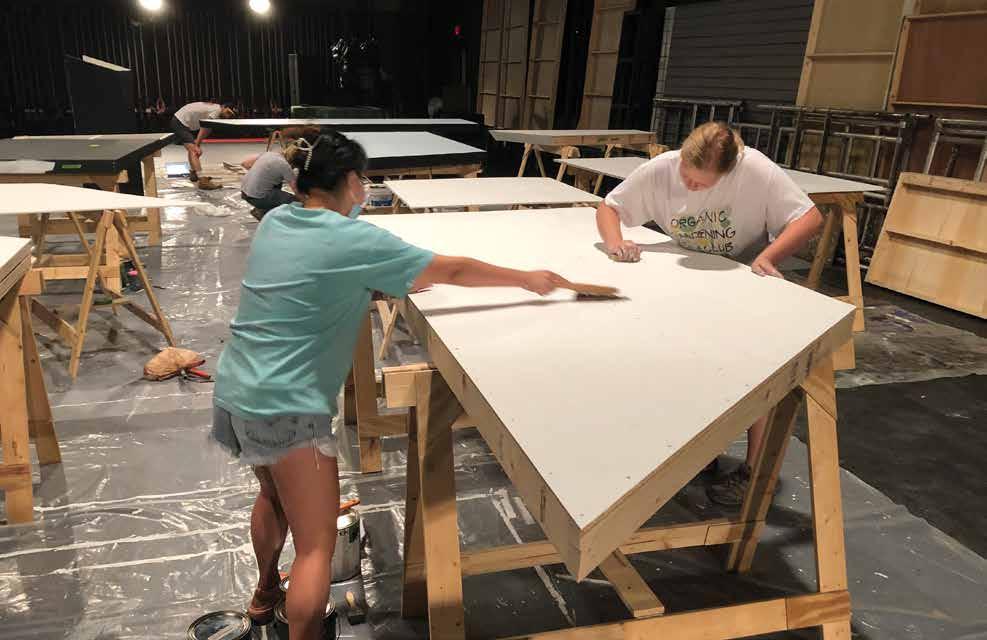
Mixed Shades, Much Joy



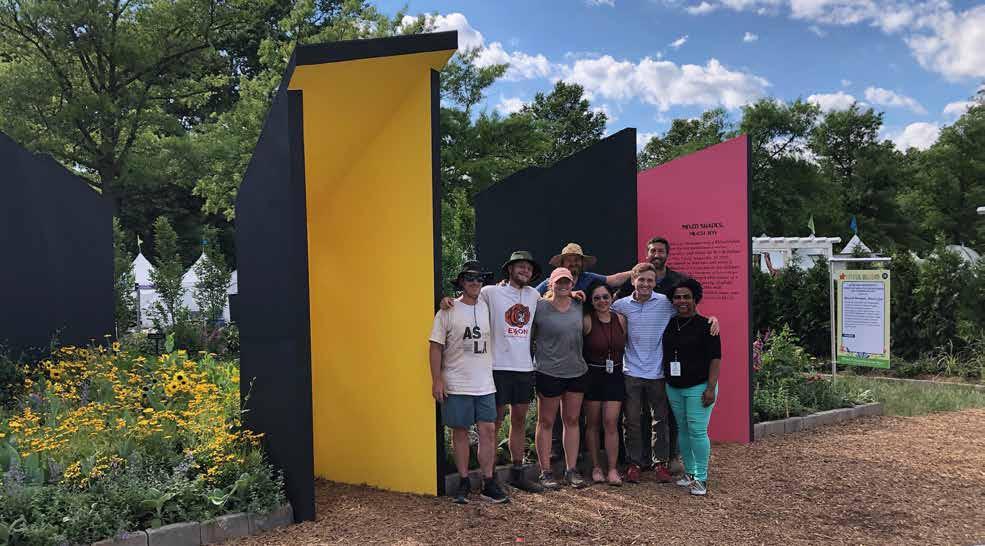

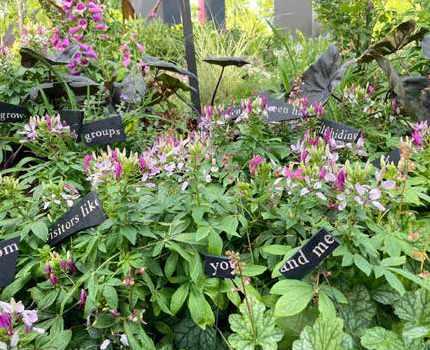


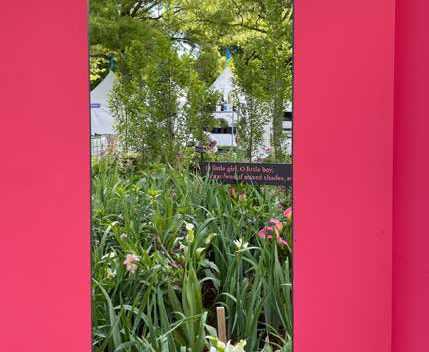

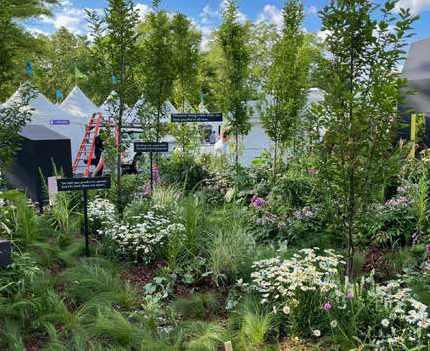
River Region Trail
River Region Trail is a non-profit organization committed to Developing a network of pedestrian green ways, parks, and outdoor resources in the River Region in Montgomery, Alabama. Throughout the semester, by Utilizing 3D modeling, our studio was trying to accomplish a variety of green way plans for the city of Montgomery that the River Region Trail Potentially uses to build that surrounding the Montgomery communities.
My green way section is going underneath interstate 85 and 65 in Montgomery. This area tends to be low-income, African American neighborhoods which are divided due to the construction of the interstates. Much African American business took away by the interstates. At the same time, the Selma to Montgomery historical trail goes right underneath the interstates. Residents think that a whole neighborhood is taken away by the interstate. Also, the most treasurable history is covered by the interstate as well. I focused on developing a green way that can reconnect the neighborhoods throughout the semester and bring the black business back. This green way is combined with a pedestrian line and bike line. I developed a sculpture Plaza, a vendor market, and local arts along the green way. I aimed to have local artists or residents come in to do the art on the green way and make it their green way.
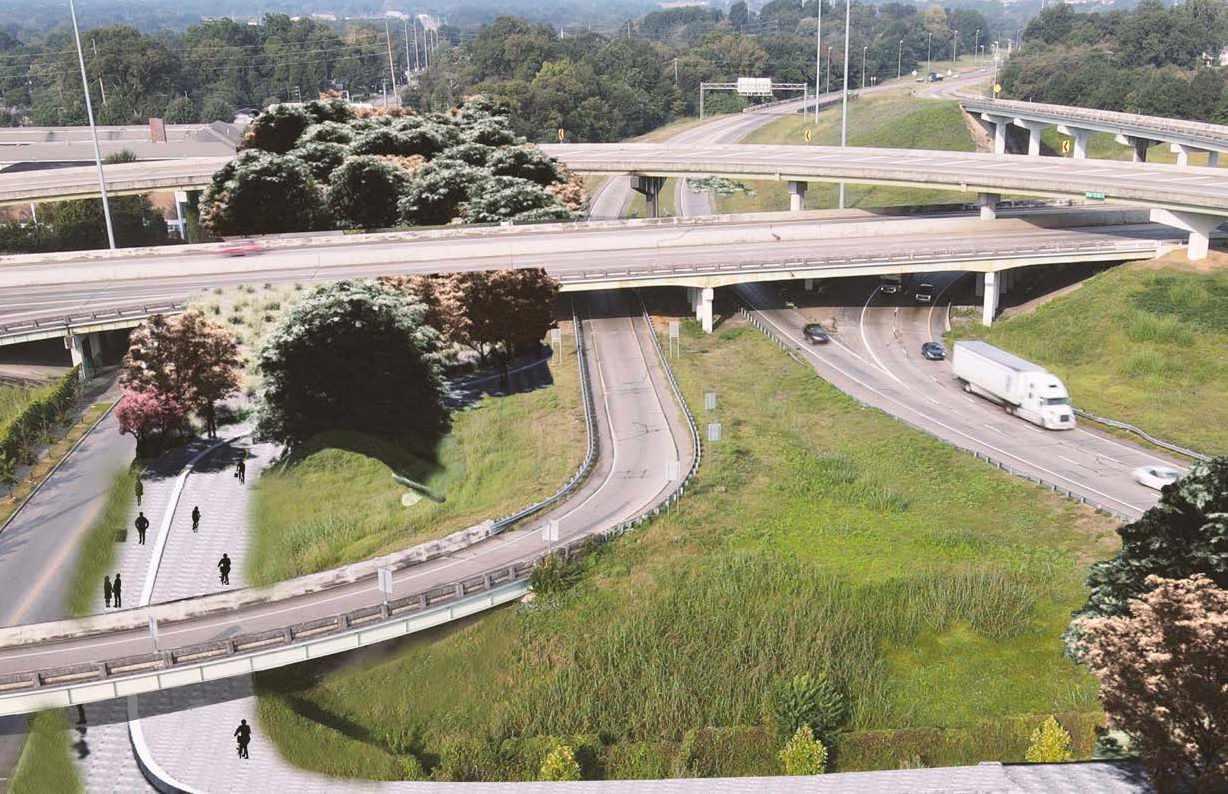
Existing Condition Section


Existing Condition
Concept Diagram 1
Design sharable bike and pedestrian line on the historic Selma-Montgomery route, at the same time add bus stops along the way to bring in more travel opinions. Have greenway go all around interstate to create a green way underneath interstate to bring in more outdoor area.
Design sharable bike and pedestrian line on the historic Selma-Montgomery route, at the same time add bus stops along the way to bring in more travel opinions. Utlize the open area along the interstate to design pocket parks.


Design Proposal Section

Concept Diagram Drawing
Concept Diagram 2
River Region Trail
Under the interstate




Before
Before
After
Before
Before After





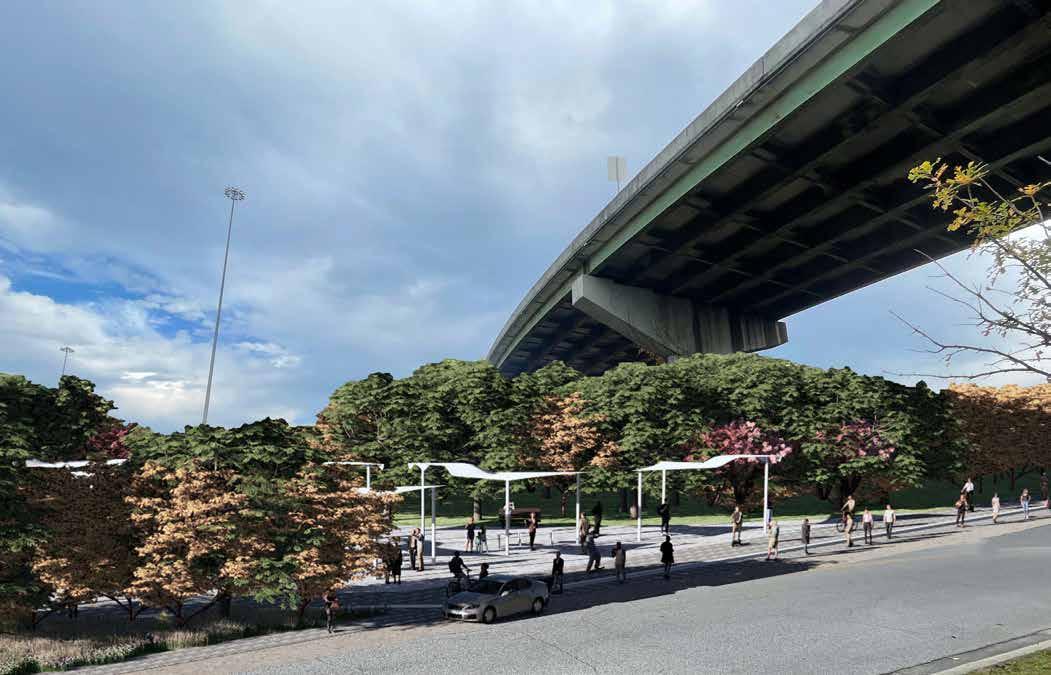


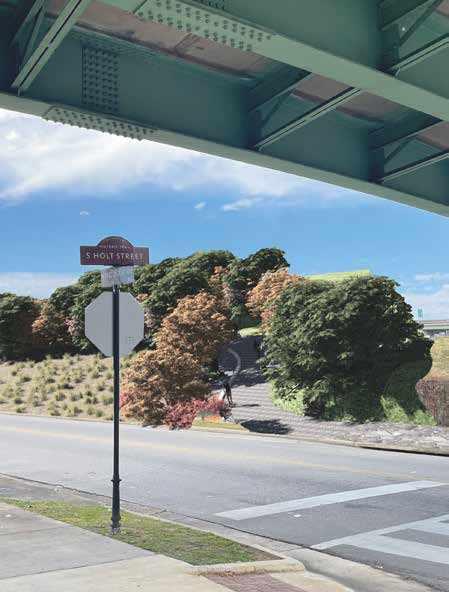
Arboretum Riparian Buffer



Arboretum riparian buffer is a project that each student picks a spot in Donald E.Davis. Arboretum locates on Auburn University’s campus to redesign. The riparian buffer widened the pond’s floodplain in the Donald E. Davis Arboretum. The Buffer provides increased water quality and stream value and controls the water level.

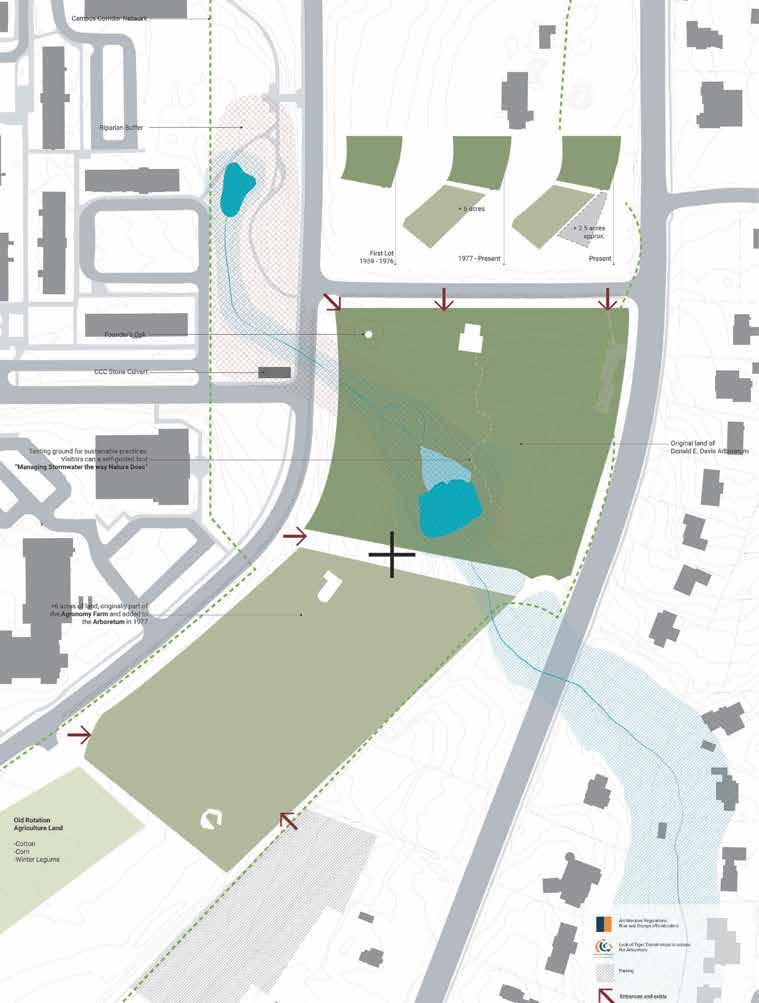
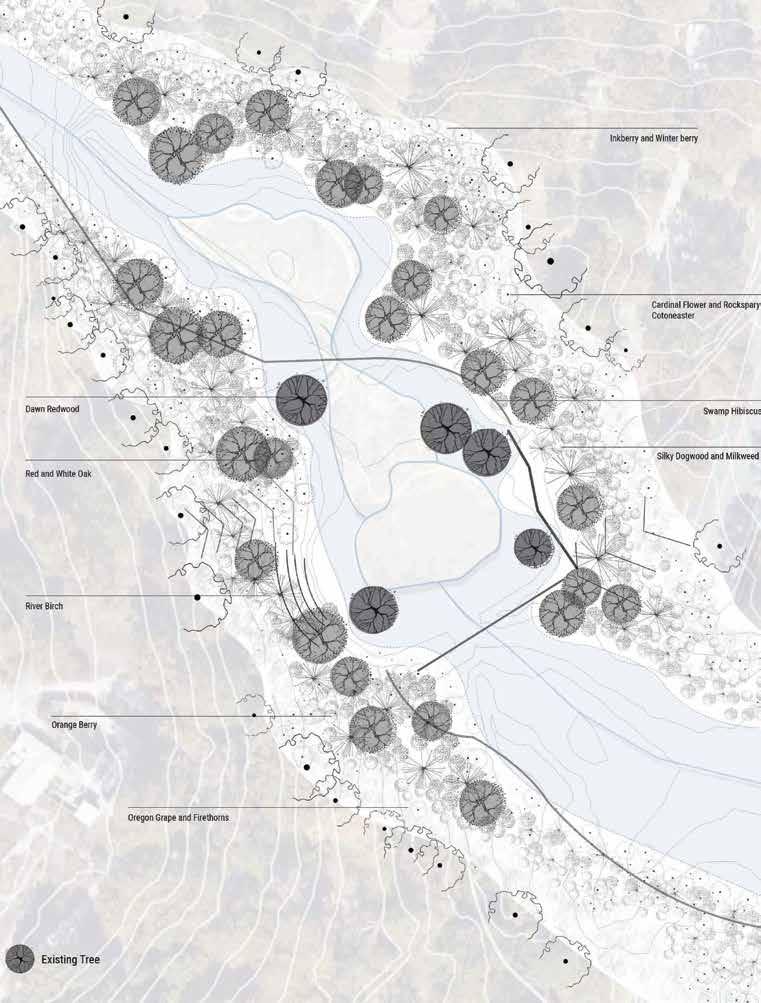
 Donald E. Davis Arboretum watershed study Arboretum riparian buffer design frame work plan Section Elevation study
Donald E. Davis Arboretum watershed study Arboretum riparian buffer design frame work plan Section Elevation study
Seasonality study



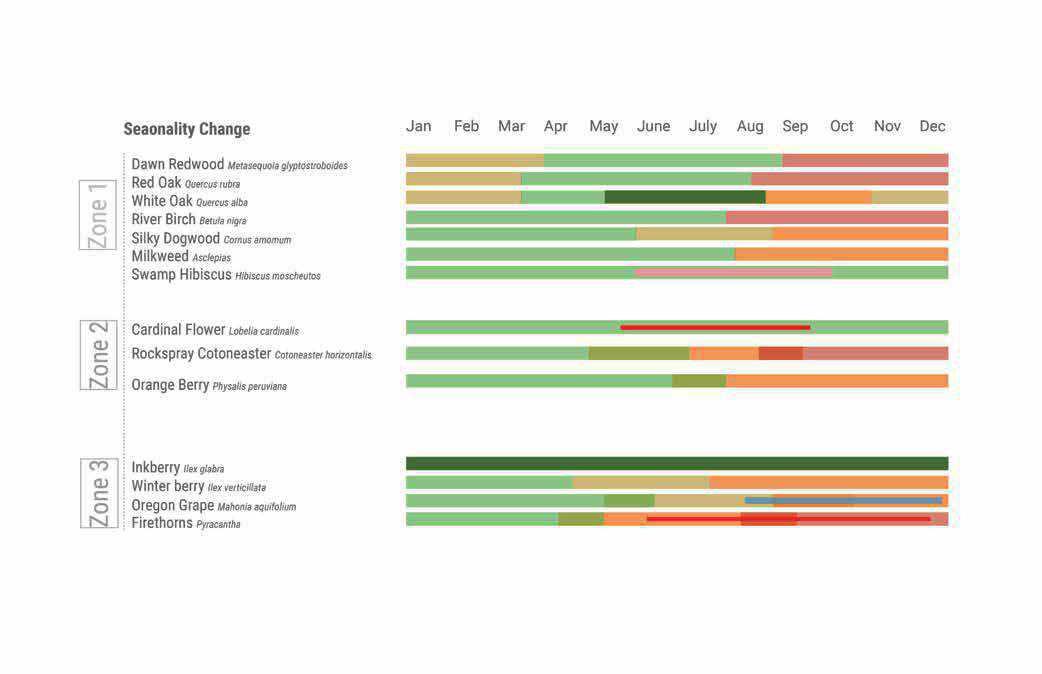
Children’s Plants Garden

Children’s plants garden is a plant spatial quality practice project. It is a plants course project that discusses the interaction between humans and plants throughout time and space. The children’s garden’s location is on the Auburn University’s campus. Naturally,therefore, the plant’s choice relies heavily on its color, form, and quality.


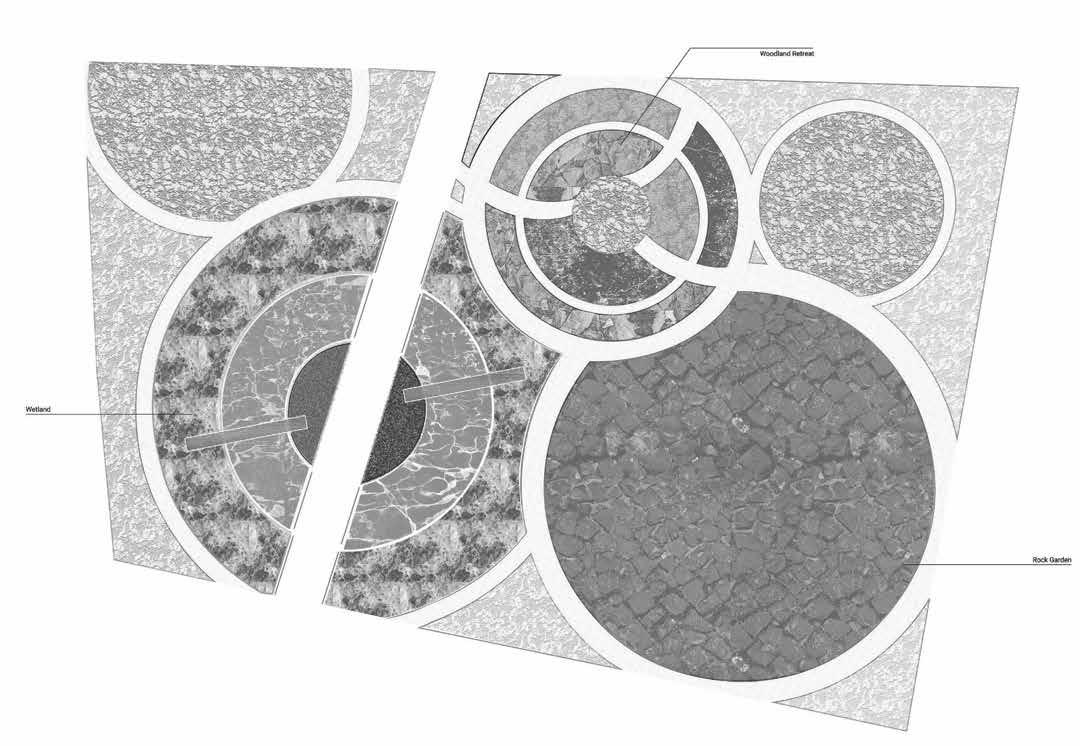
Plants Studies
Aevus Garden
Aevus Garden is a plant time study that reveals the dynamic, complex, rich potential plants possess within the landscape. The garden uses the courtyard space at the Dudley Common on Auburn University’s campus to design an aevus garden. Use plants to show the persistent changes that occur as days turn into weeks, months, and years.
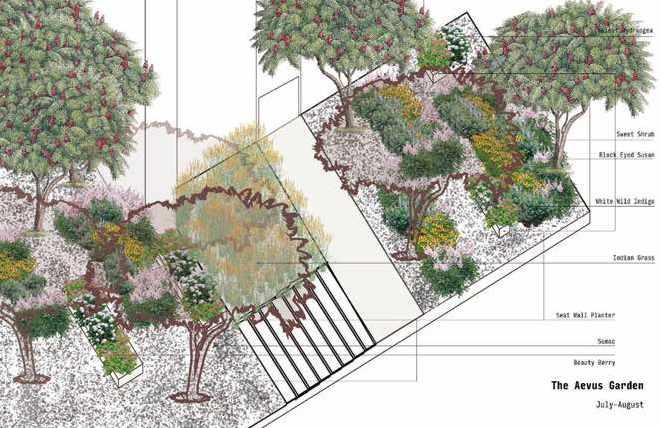





Some research and additional work that I did in my graduate study at Auburn University. Including handdrawing,shadow studying, map studying.
happens when there is sun. At night, or in winter, the plant able to store glucose through process called cellular respiration. The stored glucose provides the energy help many spring bulbs flower. Crocuses, daffodils, hyacinths, tulips and snowdrops all depend on glucose to flower.
Mesophyll

All green plant tissues can photosynthesize, but in most plants, the majority of photosynthesis usually takes place in the leaves. The cells middle layer of leaf tissue called the mesophyll
Sun the ultimate energy source of all metabolic energy for the planet. Photosynthesis essential for maintaining all forms of life on earth. Photosynthesis is the process plants use to capture energy from sunlight and convert into biochemical energy, which subsequently used to support nearly all life on earth. Source: https://www.clevelandhs.org/apps/video/watch.jsp?v=63244 https://www.khanacademy.org/science/ap-biology/cellular-energetics/photosynthesis/a/intro-to-photosynthesis https://education.nationalgeographic.org/resource/photosynthesis
Photosynthesis consists of two sets of reactions: the light-dependent reactions and the Calvin cycle. Within the chloroplast are small dislikes pictures called thylakoids surrounded by fluid-filled space called the stroma. The reactions that synthesize glucose, the Calvin cycle, occur in the stroma. The light-dependent reactions occur the thylakoid. is here that the conversion of light energy the chemical initiated.
Glucose joins with oxygen in respiration. Glucose and oxygen together produce energy, which helps the plant thrive. Carbon dioxide is one byproduct of the respiration process. If plant overcrowded waterlogged from too much rain or poor soil drainage, this can damage kill pthe plant. So plants, like people, need space to take oxygen. Humans and other mammals, however, cannot form glucose their bodies the way plants can. That’s why people eat plants that contain glucose.
Not all glucose is used for respiration. What’s not needed to produce energy for the plant used for many other purposes. may be stored in seeds. Glucose molecules together form cellulose, which builds or adds strength to cell walls. Glucose molecules also form carbohydrates. When combined with nitrates from the soil, glucose will form amino acids. When amino acids join together, they form proteins. So, think of glucose as an important source of carbohydrates and, in the right combination, as part of protein. Without glucose, plants won't grow or reproduce.
Research & Additional Work
The Power: Sunlight Thylakoids Stroma Photosynthesis
Gamma rays X-Rays UV Lights Infrared Radio Waves Blue Green Red Yellow Mesophyll Choroplast 0.001nm 1nm 10nm 1000nm Visible Light 0.01cm 1cm 1m 100m Chloroplast Granum Thylakoids Photosystem Light (energy) Light ATP NADPH Light(energy) Chlorophyll molecules eeeReaction Center Chlorophyll Glucose 1.Stored Glucose Oxygen Photosystem ATP Synthase Stroma (Calvin Cycle) (Light-dependent reactions) Thylakoid Space Stroma Structure within the cells of plants and green algae that is the site of photosynthesis, the process by which light energy converted to chemical energy, resulting the production of oxygen and energy-rich organic compounds. Leaf Section 4 A leaf is a factory P680 P700 H o 1/2 + 2H+ H+ NADP+ NADPH H+ H+ H+ H+ ADP ATP H+ H+ 235 microns 2. Glucose and Respiration 3. Other Roles for Glucose
Research & Additional Work
Photosynthesis
Photosynthesis research for New Orleans Solar Studio Fall 2022
Two gray cats lounge in the blue shade of front porch. bust of Elvis sits in side yard, draped with Mardi Gras beads. Ginger blooms spice the air. You’re in New Orleans, but not the one you might know. In city of exotic names, the historic neighborhood of Algiers stands apart. Literally. It sits across the Mississippi River, connected to downtown by ferry line one of the nation’s oldest. As they have over three centuries running, boat deposits you on the levee of Algiers Point. Explore. Relax. Its pace may be quiet, but its architecture is not the wood houses lathed and carved in variety of Victorian embellishment, shout their individuality. And history: The War of 1812, the Union occupation, an 1895 fire almost leveled it. But back Algiers came to make music. Jazz flourished here with neighborhood artists such as Kid Valentine and Papa Celestine. Algiers
https://data.nola.gov/Planning-Zoning/Neighborhood-Conservation-Districts/c8ew-p2c8
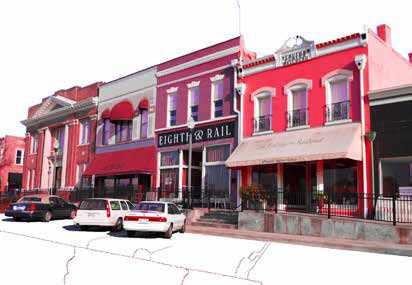








https://koordinates.com/layer/103318-new-orleans-future-land-use/

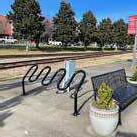







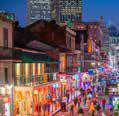
New Orleans
Fabric Study New Orleans city land use after Hurricane Katrina 2. 5. 3. 4. 6. 7. 8. Often called the Crown Jewel of New Orleans, the French Quarter is one of NOLA's most historic neighborhoods.There are plenty of new mixed in with the old. There’s reimagined French Market, modern boutiques and artisan cocktails mix with beloved antique stores and old restaurants. 1.French Quarter 2. CBD/Downtown 4. Mid-City 3. Uptown 5. Algiers The South Market District, micro-neighborhood of the CBD, transformed asphalt lots into urbanity where award-winning bakers and chefs serve up cuisine to visitors and locals in trendy restaurants. Restored theaters the Saenger, the Orpheum and the aptly named Joy host incredible acts and Broadway shows. And, everywhere, hotels to accommodate your stay. With close proximity to both the French Quarter and the Garden District, stay in the CBD is win-win. https://nolaplans.com/plans/BNOB/Urban%20Planning%20Action%20Plan%20Final%20Report.pdf
Urban
https://www.neworleans.com/plan/neighborhoods/ https://portal-nolagis.opendata.arcgis.com/datasets/NOLAGIS::planning-districts/explore?location=30.020376%2C-89.884200%2C11.56
the kind of place where your auto mechanic invites you to crawfish boil and total stranger may buy you drink at an Irish pub or cannoli at an Italian bakery. Take the red streetcar line up Canal to the Cemeteries (Mid-City’s dead neighbors are as interesting as the live ones) or bike the new 2.6-mile-long Lafitte Greenway that stretches from Basin Street to Carrollton Avenue and, conveniently, past po’ boy shop or two or 17 – with sno-ball shop and micro-brewery thrown in for good measure. Buttermilk biscuits. Live music. bowl of Vietnamese pho. 8. New Orleans East the New Orleans few know, but many should. Between the shotgun houses of the Seventh Ward and the wild and watery bayous fronting Lake Borgne are series of communities Gentilly, New Orleans East, Holy Cross, Versailles, Chalmette as diverse
It’s
as the city they call theirs. Discover the Lower Ninth Ward, where new architecture and new hope rise from Katrina. Watch for alligators while walking the boardwalks of Bayou Sauvage National Wildlife Refuge and learn the relationship between the city and the watery world it’s built upon.
homes
tiered
leafy
Uptown’s got the looks in the family, bless its heart. Those handsome neighborhoods, like the St. Charles Avenue streetcar, trundle upriver, unfolding as series of distinctive names: Oretha Castle Haley, The Garden District, Irish Channel, Riverside, the Black Pearl, Carrollton.
Uptown’s
-- gleaming white and
like wedding cakes or shot-gunned into long, narrow lots are the place’s glory and sheltered by canopies of
green or family trees as branched and blossoming as any ancient magnolia.
still sings its own New Orleans tune. Cross the water and listen. 6. Lakeview The lakefront, an intersection of sky, shore and water, is dotted with seafood restaurants, sailboats and marinas. This neighborhood is nestled beside City Park, so you can wander the paths of the Besthoff Sculpture Garden, part of the New Orleans Museum of Art, or visit Storyland, beloved family amusement park. Lakeview’s Harrison Avenue bustles with an assortment of stylish stores and restaurants featuring fare from burgers to burritos The mood is carefree and casual, friendly, fun and pure ew Orleans. Target Development Areas. Future Land Use Recreation Area Streets Planning District Neighborhood Conservation Areas Parks and Open Space Plan After Hurricane Katrina, the city of New Orleans is trying to rebuild the city. There are lot of areas city is turning into park land are open space. In the future land use, city is moving many recreational space towards east of the city. Potential Areas for Future Parkland Existing Neutral Ground Proposed Open Space/Canal Connections 2000-2030 2000s 2010-20 2010-20 2020-30 Oplieka Economic Value 200’300’ Urban fabric research for New Orleans Solar Studio Fall 2022 SiteAnalysis EconomicValue Opelika Studio Spring 2022 SiteAnalysis Soil Opelika Studio Spring 2022
Site texture analysis,Studio Fall 2020 Shadow

Ground cover study, Summer 2019


Path study, Summer 2019

Study, Solar Studio Fall 2022



















 Focus Area Two
Bike & Pedestrian Sidewalk with String Lights along with the whole site.
Focus Area Two
Bike & Pedestrian Sidewalk with String Lights along with the whole site.







 Photot by: Yahan Liu
Participant: Taylor Chavers Lily Dendy Dustin Elston Sadie Gurkin Emily Gustafson Rob Johnson Yahan Liu
Trae Watson Alexander Wayland
Photot by: Yahan Liu
Participant: Taylor Chavers Lily Dendy Dustin Elston Sadie Gurkin Emily Gustafson Rob Johnson Yahan Liu
Trae Watson Alexander Wayland













































































 Donald E. Davis Arboretum watershed study Arboretum riparian buffer design frame work plan Section Elevation study
Donald E. Davis Arboretum watershed study Arboretum riparian buffer design frame work plan Section Elevation study





































